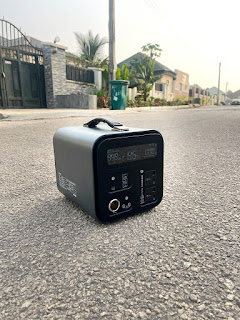Portable power stations have become indispensable devices for providing reliable and convenient electricity in various places. These compact, versatile devices act as portable generators, providing clean, and acting as backup sustainable energy systems. Unlike traditional generators, mobile power stations often run on batteries, making them environmentally friendly and suitable for many applications.
What is a Portable power station?
Electrophoresis mobile power station, also known as mobile power station. Solar generators or inverter generators are compact energy storage systems equipped with batteries, inverters, and multiple output ports. They are available in a variety of sizes and capacities, providing a portable and efficient solution for powering electronics, home appliances, and even small tools.
A portable power station can be thought of as a power bank on steroids. These little yet powerful gadgets have internal batteries that store energy for use in powering a variety of appliances and devices. Consider phones, laptops, lights, TVs, and even small refrigerators.
There are alternatives for both small-scale personal use and larger-scale commercial uses among the sizes and capabilities of portable power stations. Usually, solar panels or AC power outlets are used to recharge them, this can be done by simply plugging the charging cable into the grid or charging with solar panels through a solar panel adapter.
Key Components of Portable Power Stations:
Battery: At the heart of the power station, batteries store electrical energy generated from various sources.
Inverter: Converts DC (direct current) stored in the battery into AC (alternating current), making it compatible with most household appliances.
Input Ports: Allow recharging the power station through various sources such as solar panels, wall outlets, or car chargers.
Output Ports: Range from traditional AC outlets to USB and DC ports, catering to a diverse range of devices.
The inner workings of a portable power station may seem complicated, but the basic principle is simple:
Energy storage: The heart of the device is the battery, usually made from lithium-ion or lithium iron phosphate (LiFePO4). These types of batteries store electrical energy that you supply, either from the grid or from solar panels.
Power conversion: Inverters convert stored electrical energy from DC (single current) batteries DC) into usable AC electricity (alternating current) used by most devices. .
Output Channels: Various ports and sockets allow you to connect your devices and appliances to the station and consume power. These can include AC outlets, USB ports (regular and fast charging), DC outputs, and even wireless chargers.
Portable power systems Charging Options:
Portable power stations can be charged through different methods, making them versatile for various environments. Common charging options include:
Solar Panels: Luckily, we can harness solar energy to charge the battery, providing a sustainable and eco-friendly power source. Usually, 100-watt solar panels will charge a 500Wh power system in 4 hours and charge up a 1000Wh power system in 6 hours.
Wall Outlets: Connect the power station to a standard electrical outlet for quick charging. This takes about 2 hours for a full charge and usually consumes about 2Kwh of grid electricity (which is approximately NGN170.00, depending on your location in Nigeria). This is my preferred option, especially if you move this system around.
Power Output: After being charged, portable power stations can provide a range of devices with electricity. These units' inverters guarantee a clean, steady power output that is appropriate for delicate devices. Users can charge everything from cameras, laptops, fans, Internet modems, gaming consoles, and small refrigerators to smartphones thanks to the variety of output options, which include USB ports and AC outlets.




